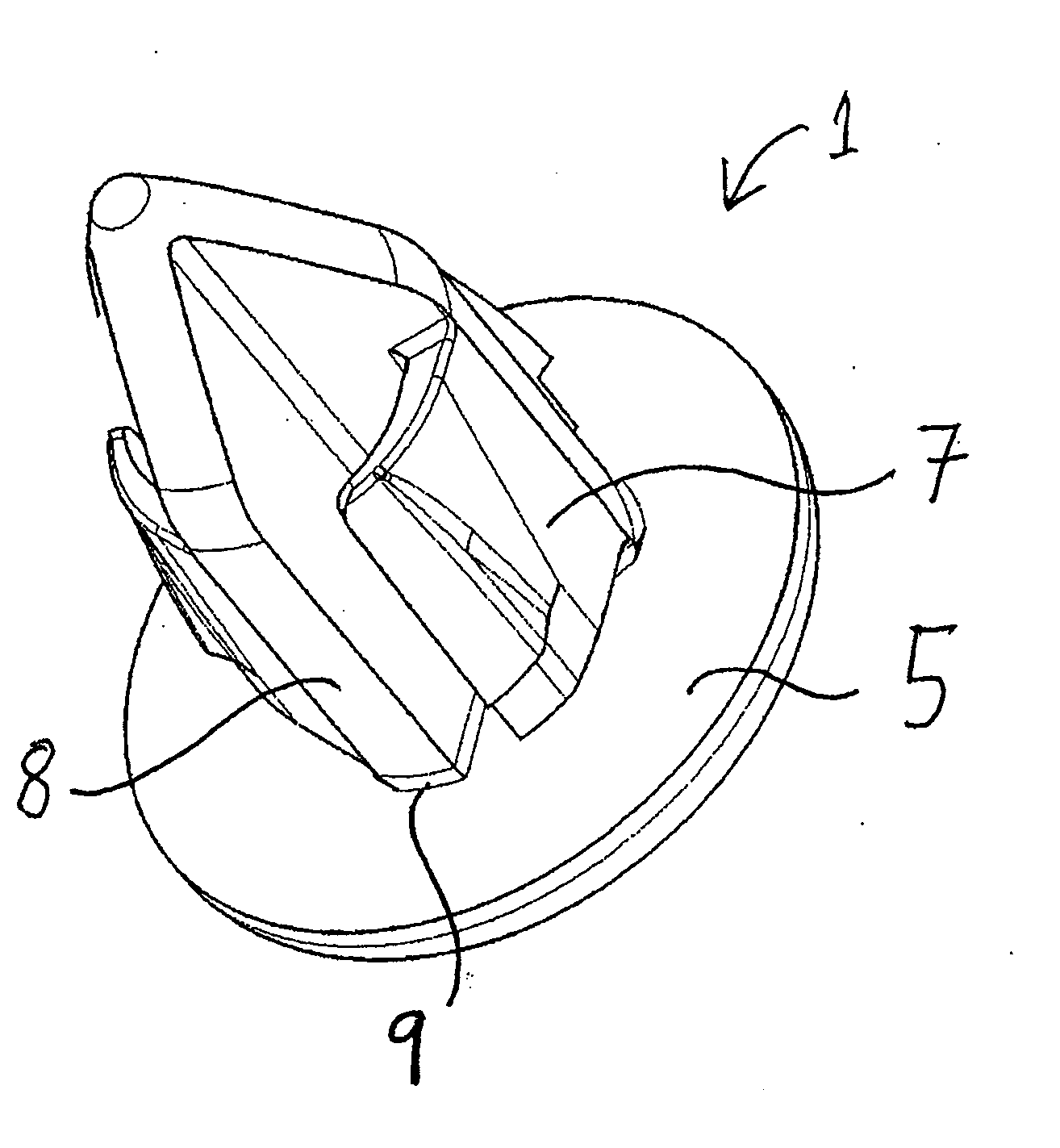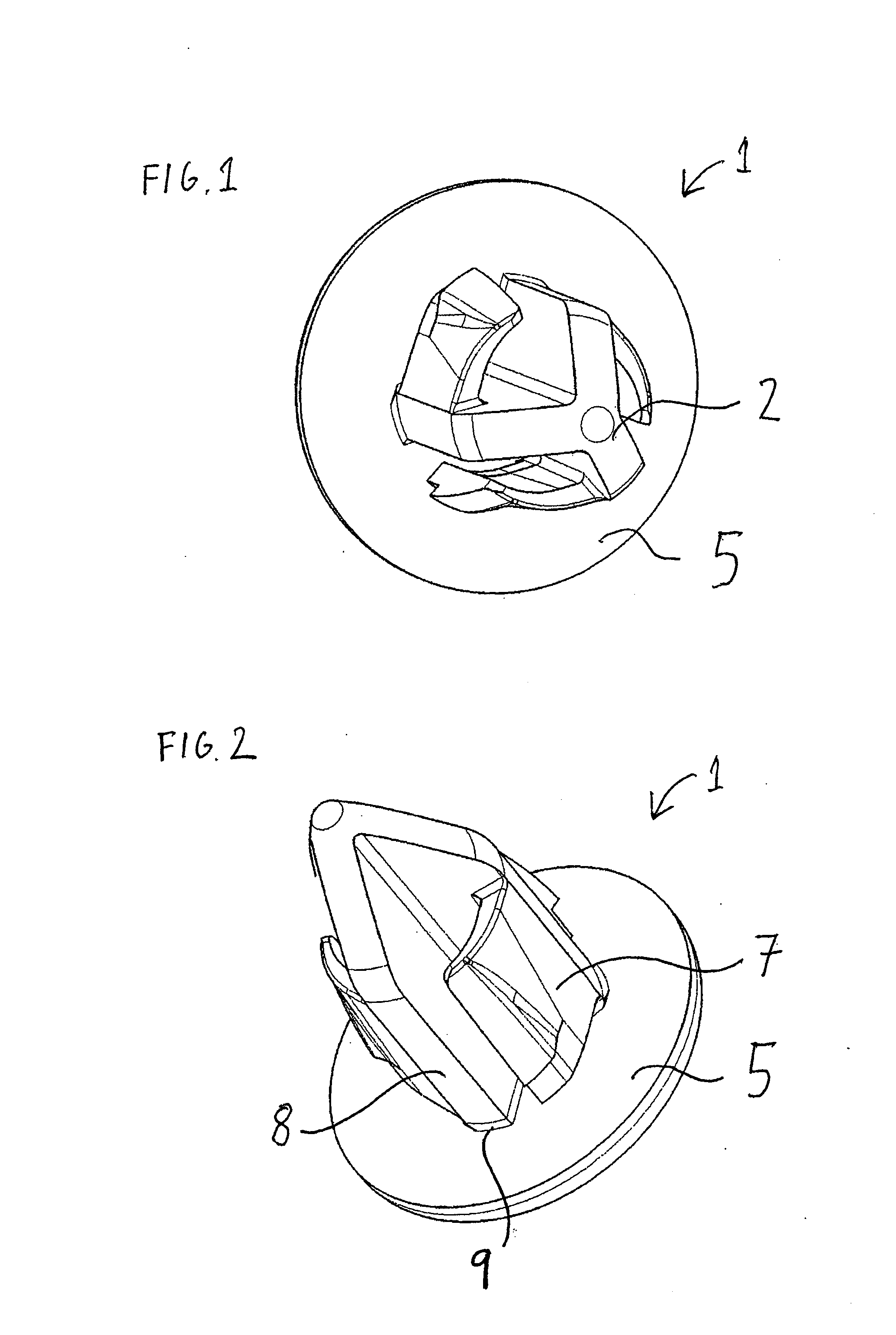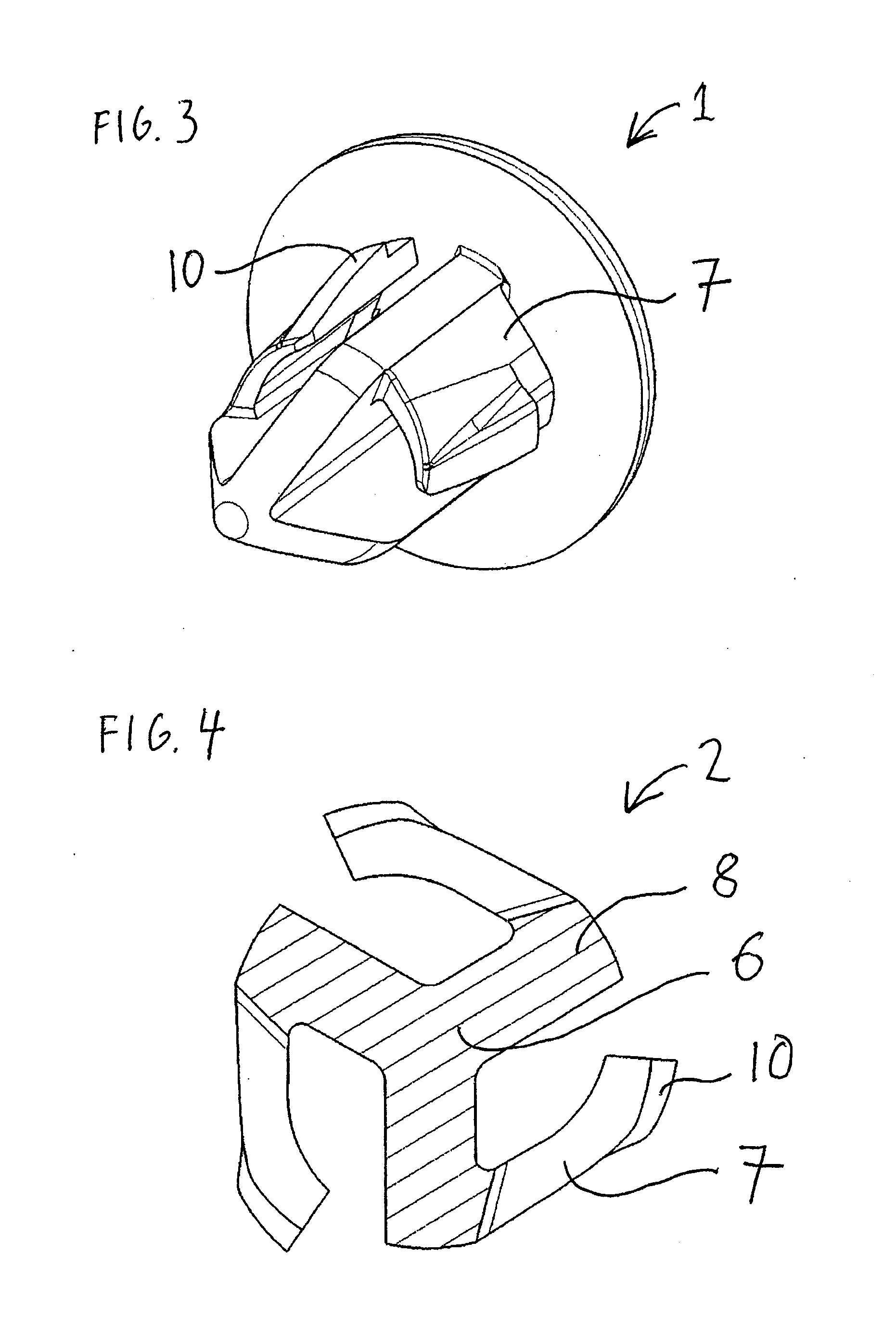Fastening device
- Summary
- Abstract
- Description
- Claims
- Application Information
AI Technical Summary
Benefits of technology
Problems solved by technology
Method used
Image
Examples
Embodiment Construction
[0035]In FIG. 1-9 is described an embodiment of a fastening device 1 according to the invention. In FIG. 1 is described the fastening device 1 comprising a main portion 2 and a head 5. It is most clearly shown in FIG. 6 that the main portion 2 is provided with a base end portion 3 and a distal end portion 4. The main portion 2 comprises guiding elements 6 and resilient elements 7. In the disclosed embodiment comprises the guiding element three vanes 8. The construction of the main portion 2 is probably most clearly shown in FIG. 4 wherein a cross sectional view of the main portion 2 comprising the guiding element 6 is shown as the lined area comprising three vanes 8 and three resilient elements 7 attached to the vanes 8. The vanes 8 are spaced apart equidistantly from each other on the surface of the head 5 such that the peripheral parts of the bases 9 of the vanes 8 (most clearly shown in FIG. 2) are located at an equidistant distance from the centre of the main portion 2 (most cle...
PUM
 Login to View More
Login to View More Abstract
Description
Claims
Application Information
 Login to View More
Login to View More - R&D
- Intellectual Property
- Life Sciences
- Materials
- Tech Scout
- Unparalleled Data Quality
- Higher Quality Content
- 60% Fewer Hallucinations
Browse by: Latest US Patents, China's latest patents, Technical Efficacy Thesaurus, Application Domain, Technology Topic, Popular Technical Reports.
© 2025 PatSnap. All rights reserved.Legal|Privacy policy|Modern Slavery Act Transparency Statement|Sitemap|About US| Contact US: help@patsnap.com



